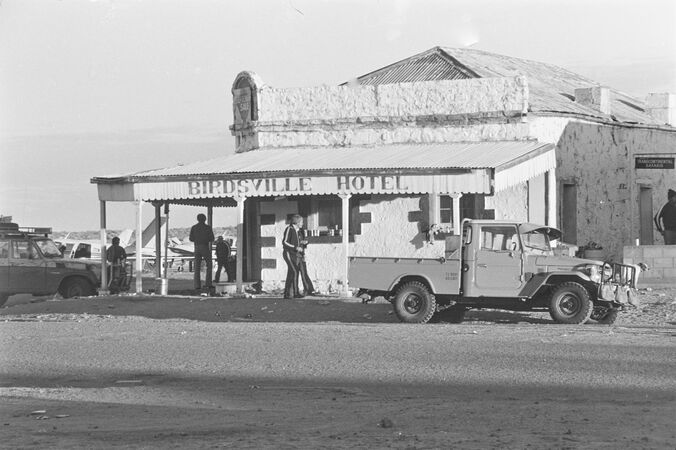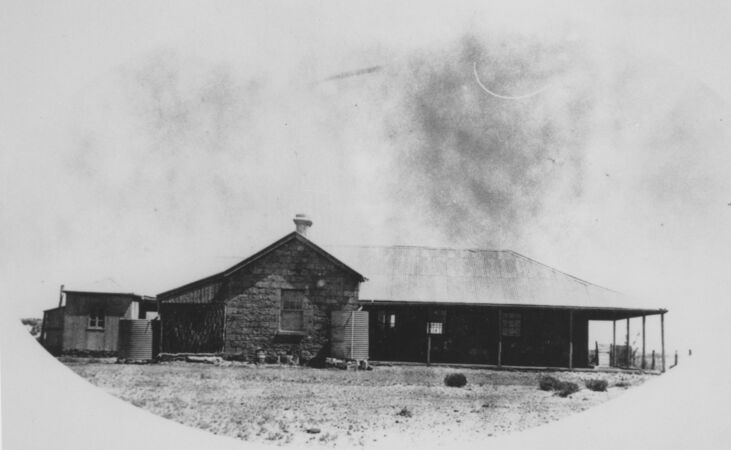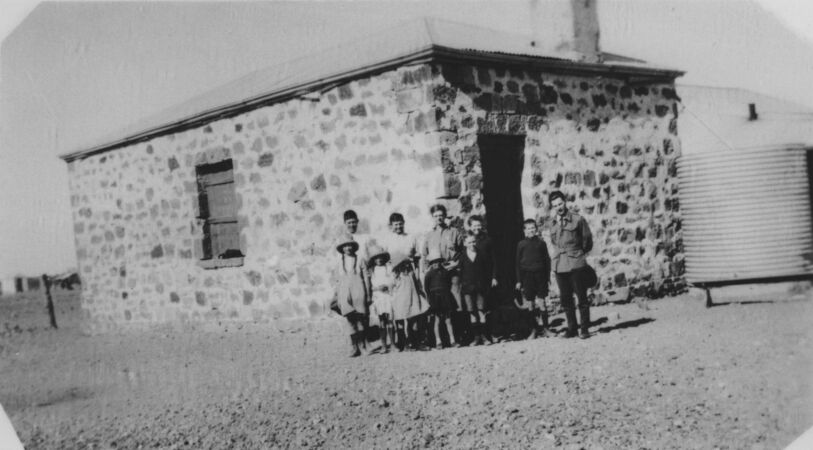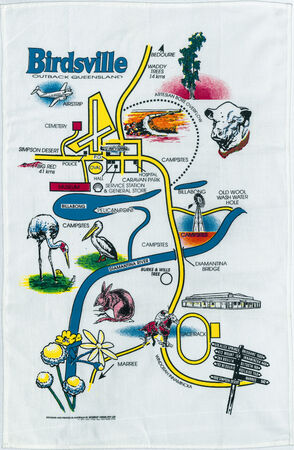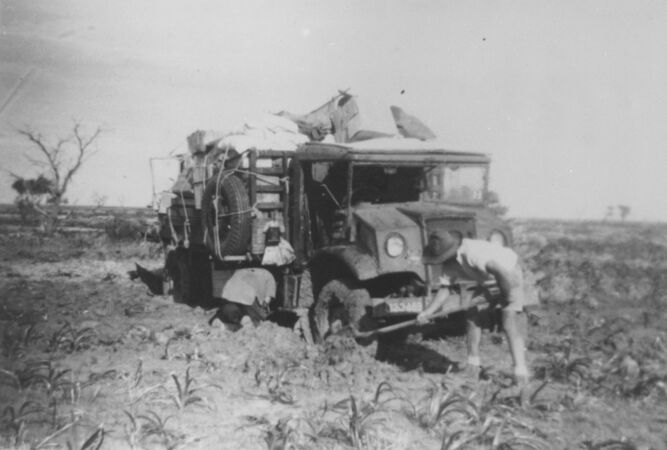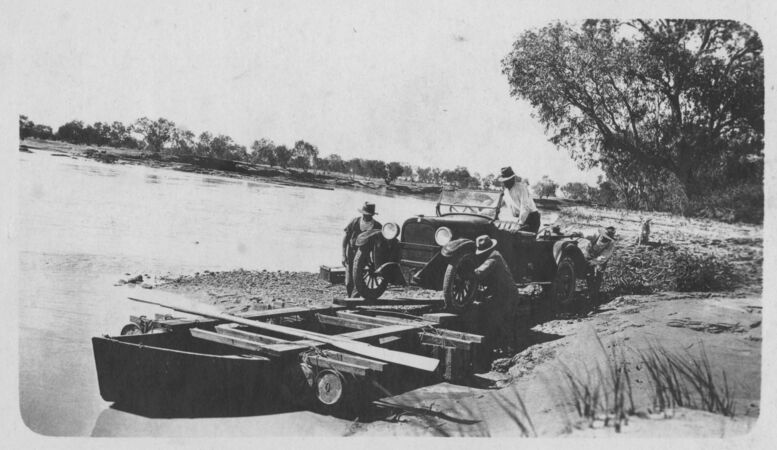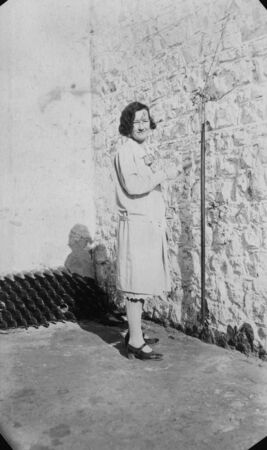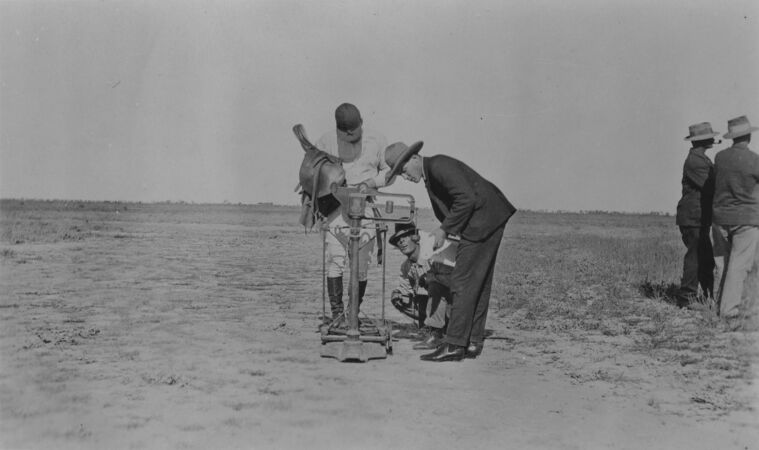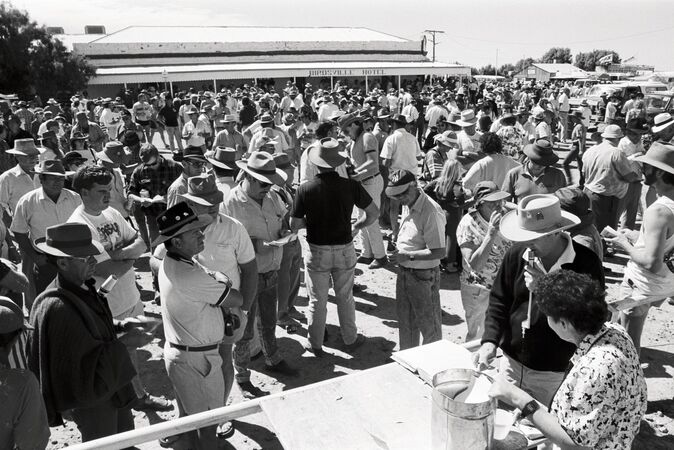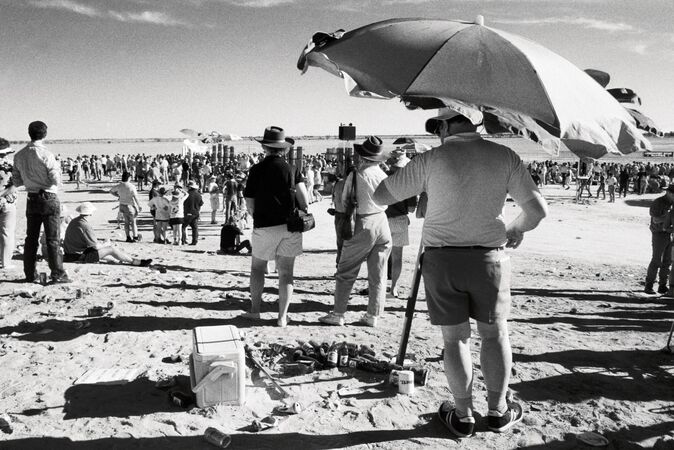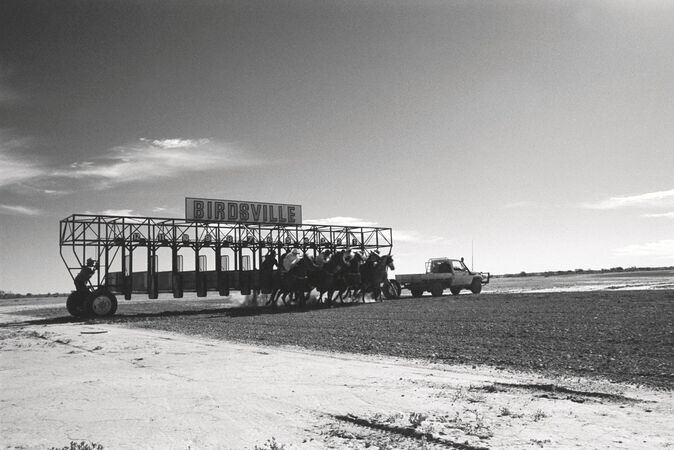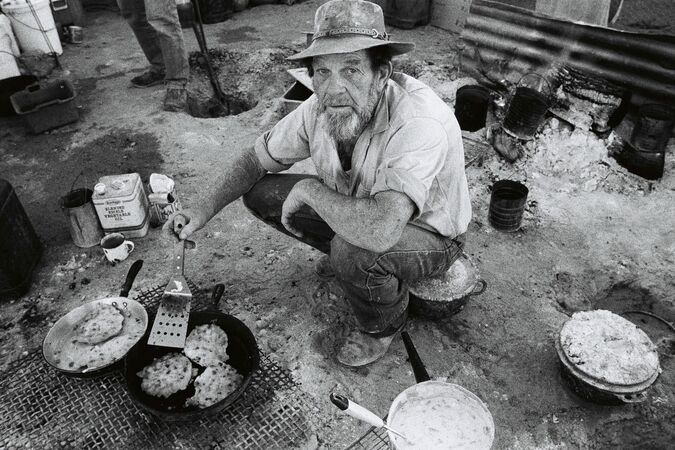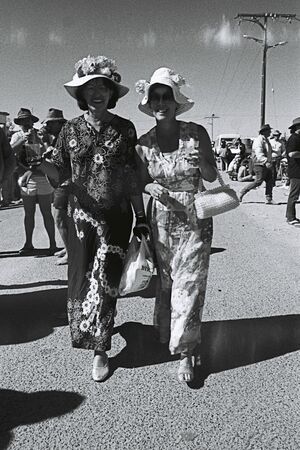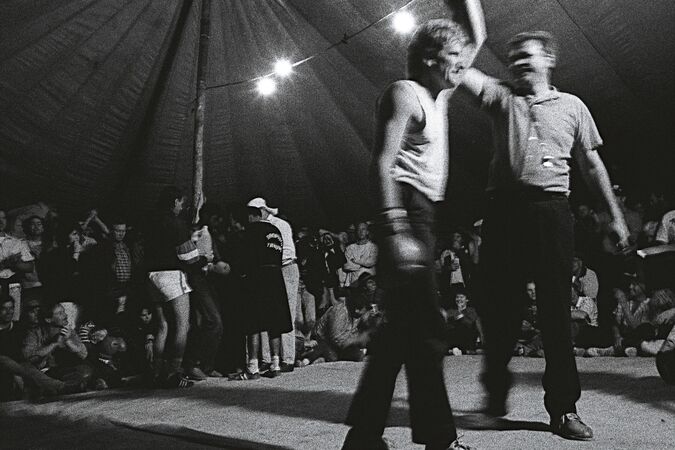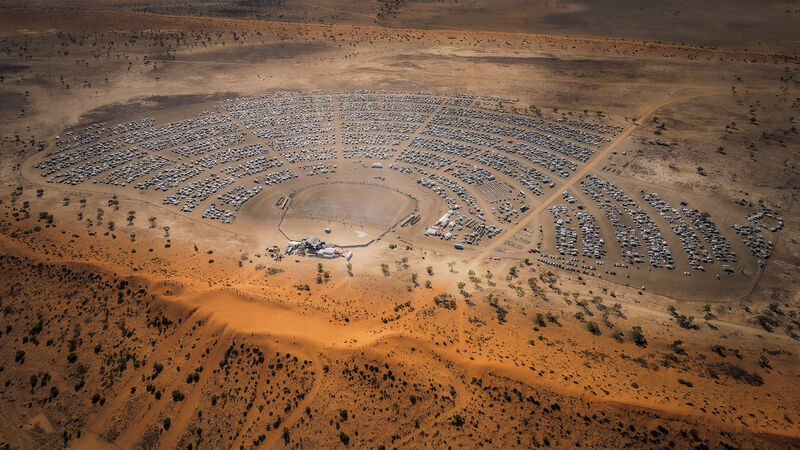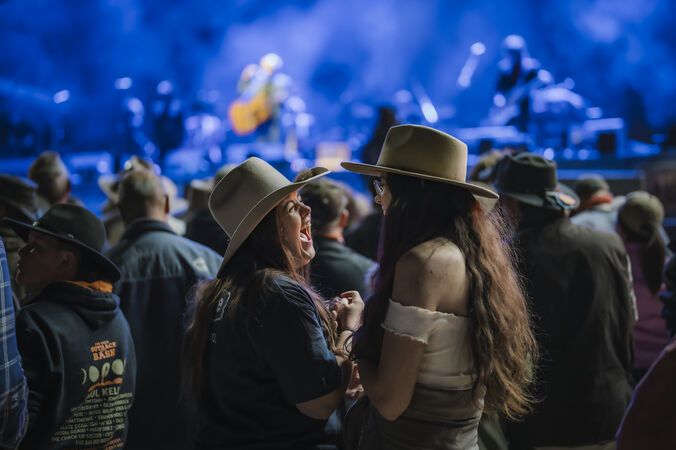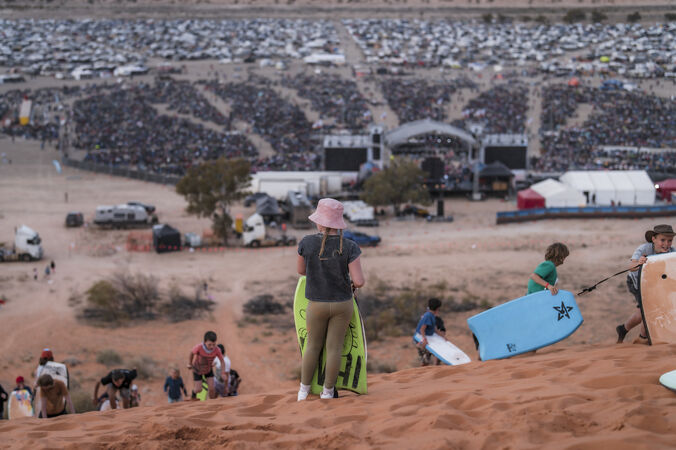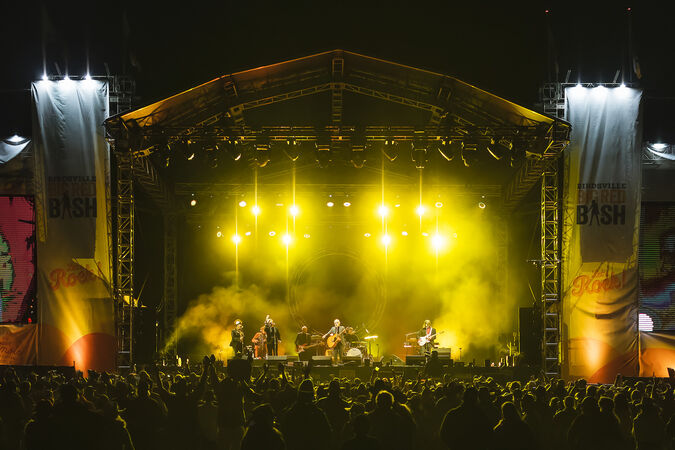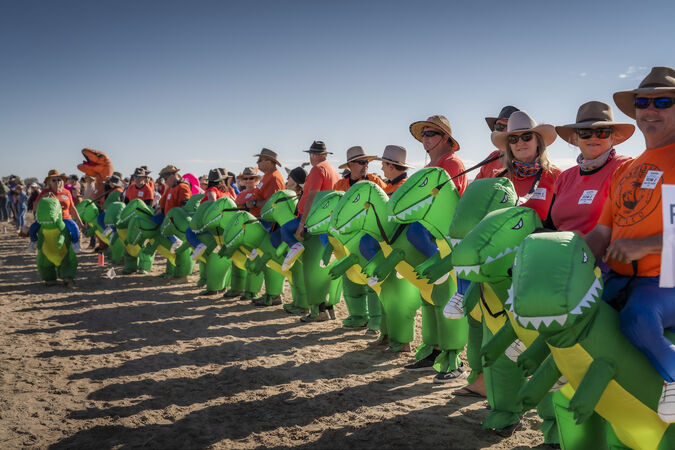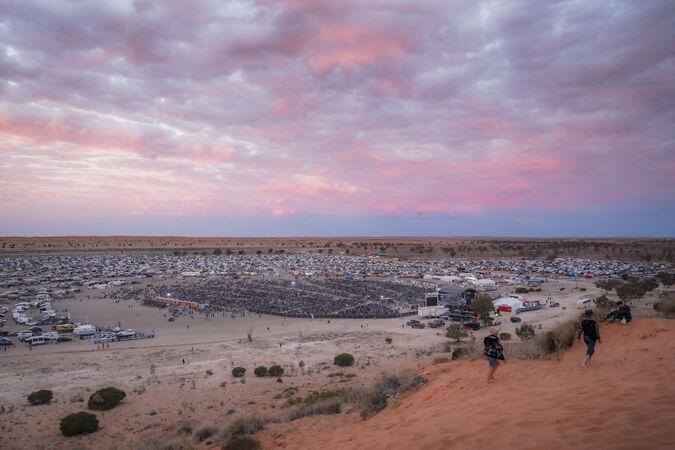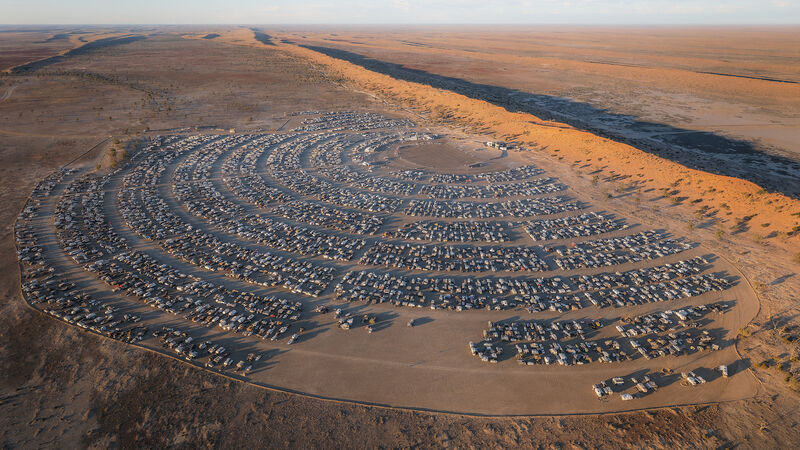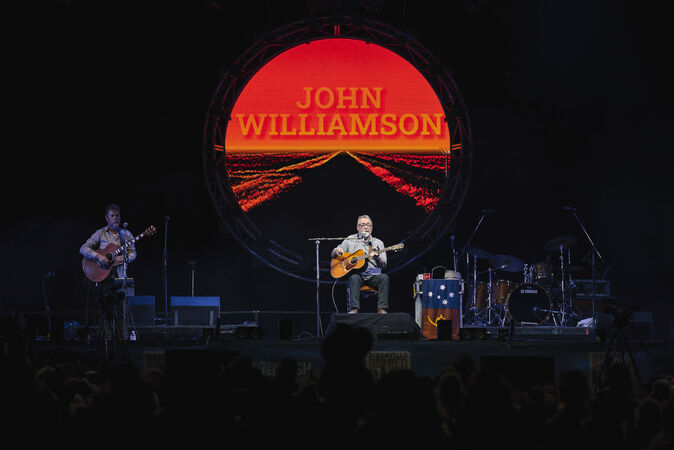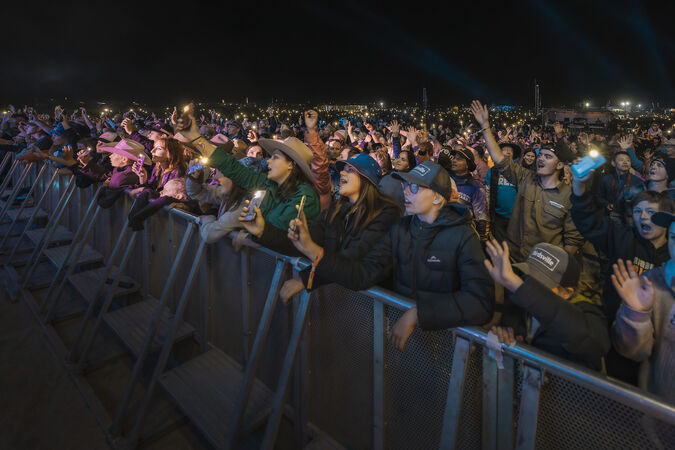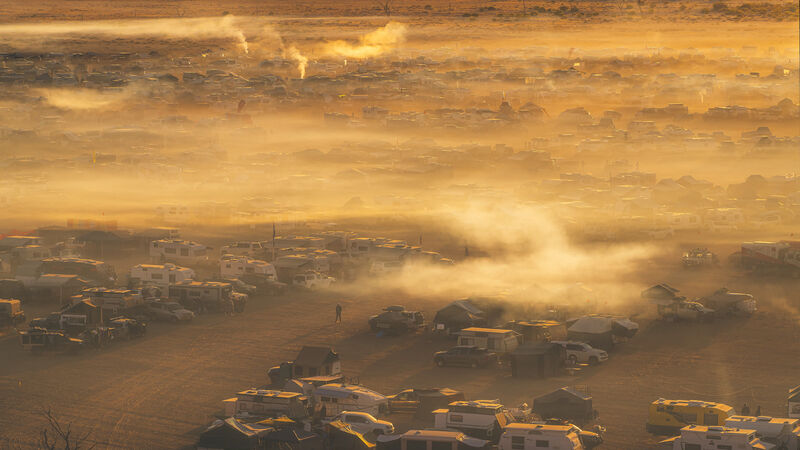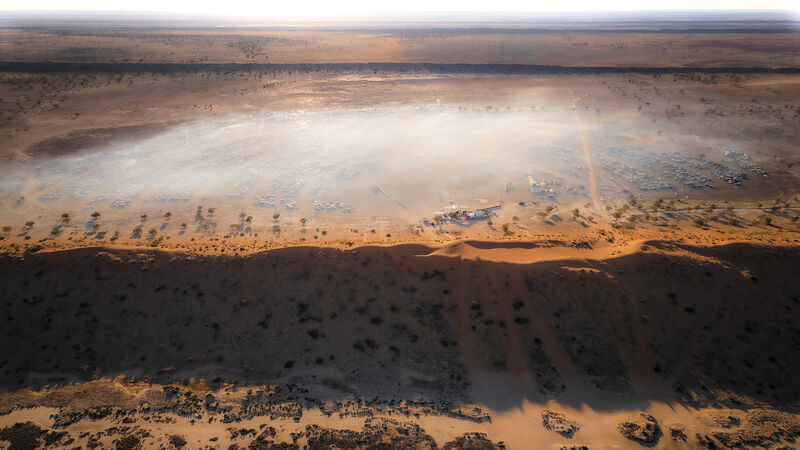Discover Birdsville: an outback icon on the Diamantina
By Janine Lucas | 10 February 2025
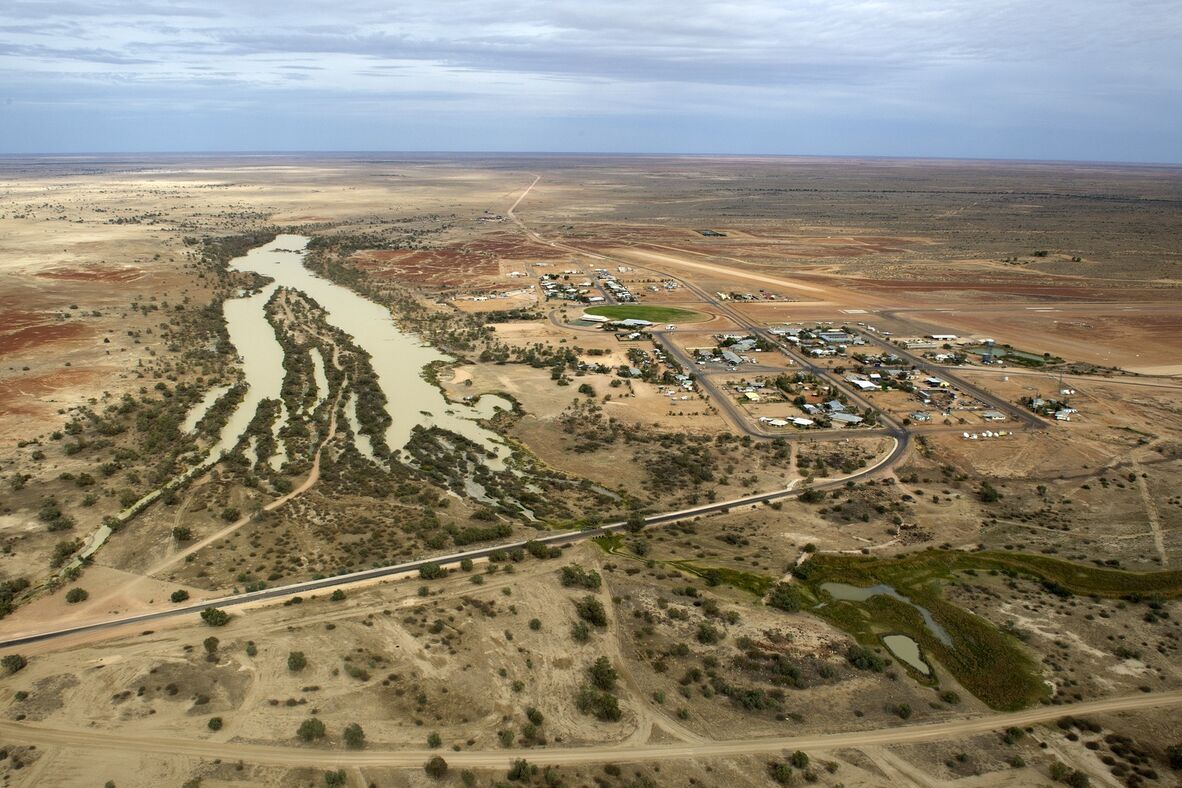
Aerial view of Birdsville, Queensland, 2013, Darren Clark, John Oxley Library, State Library of Queensland. Image 29221-0001-0047.
Where is Birdsville?
The iconic outback town of Birdsville sits at the edge of the Munga-Thirri-Simpson Desert on the vast, red dirt plains of Queensland’s Channel Country.
Birdsville, is 175 km from Poeppel Corner – the point where the borders of Queensland, Northern Territory and South Australia join. The Birdsville Races and the Big Red Bash music festival attract adventurous travellers from all over the world.
Birdsville history: watering holes, doggers and cameleers
Birdsville, or Wirrarri, is on the traditional lands of the Wangkangurru and Yarluyandi peoples. Their connection to the Munga-Thirri-Simpson Desert dates back tens of thousands of years.
First Nations desert peoples were experts at finding and prolonging water supplies in the arid landscape. They built dams across claypans and dug wells (mikiri in Wangkangurru language). Mikiri became centres of social and cultural life.
The town was established as a border and customs post at a permanent waterhole on the Diamantina River. Known as the Diamantina Crossing until it was gazetted as a town in 1885, it was named for its teeming bird life.
‘At the turn of the 19th century, the town boasted a population of over 100 – stockmen, cameleers, fencers, doggers (wild dog shooters), and customs officials gathering duty on stock crossing the border between Queensland and South Australia,’ author Evan McHugh writes in his 2009 book, Birdsville: my year in the back of beyond.
‘Federation in 1901 meant the end of border taxes between the states, and towns like Birdsville suffered as a result.’
In its heyday, the town had 3 hotels: the Birdsville Hotel, Tattersalls Hotel, and the Royal Hotel. Through cyclones, fires and drought, only the Birdsville Hotel has endured.
Built of locally quarried sandstone, it remains one of Australia's most famous pubs. McHugh describes it as ‘one of the few places in Australia where you can land in a plane and taxi almost to the front door of the pub’.
2014 Queensland Business History Award, Birdsville Hotel
4 fast facts
- Aboriginal trade routes formed the basis of the Birdsville Track. Drovers moved cattle along the stock route from western Queensland to the railhead at Marree, South Australia, from the late 1800s.
- In 1923, John Flynn established the first Australian Inland Mission (AIM) bush nursing hostel at Birdsville. AIM pioneered pedal radio communication in the outback, connecting the hostels and cattle stations for ‘galah sessions’ – an early incarnation of talkback radio.
- Queensland’s highest official temperatures were recorded at Birdsville: 49.5C in December 1972 and 49.4C in January 2024. (The 53.3C national record temperature measured at Cloncurry in January 1889 lost official status in the 1990s. The Bureau of Meteorology deemed it was measured in a non-standard instrument shelter – reportedly a beer crate nailed to a building.)
- The Birdsville area is one of only 3 spots in Australia where you can find the waddi tree, an endangered species that lives for more than 500 years and has timber so hard it would damage an axe.
Melbourne Cup of the outback
The population swells from around 100 to more than 6,000 on the first weekend of September for the Birdsville Races aka ‘the Melbourne Cup of the Outback’.
The first Birdsville Races were held in September 1882 and have grown into a social spectacle over several days, with attractions including Fred Brophy’s Outback Boxing Troupe.
Big Red Bash
Birdsville Big Red Bash is said to be the world’s most remote music festival. Visitors set up an enormous camp on Adria Downs Station, 35 km from town.
The concert stage’s imposing backdrop is Big Red (Nappanerica), a 40-metre-high red sand dune – the biggest of the 1,140 sand dunes that range in parallel across the Munga-Thirri-Simpson Desert.
Big Red Bash organisers pressed pause on the annual festival after the 2024 event and set its return for July 2026.
Resources from State Library collections
Birdsville: my year in the back of beyond, 2009, Evan McHugh, John Oxley Library, State Library of Queensland
The Birdsville Cup: where the "the dust never settles", 2015, Berylouise Mitchell, John Oxley Library, State Library of Queensland
Kuungkari, Bidjara, Inangai and Wangkangurru Central West Region community language journey digital story, 2019, John Oxley Library, State Library of Queensland
Heritage of the Birdsville and Strzelecki Tracks, 2002, Lynn Leader-Elliott, Iris Iwanicki, Austral Archaeology, Historical Research and South Australia Department for Environment and Heritage, John Oxley Library, State Library of Queensland
The Diamantina visitors’ guide, 2014, Diamantina Shire Council, John Oxley Library, State Library of Queensland
Comments
Your email address will not be published.
We welcome relevant, respectful comments.

